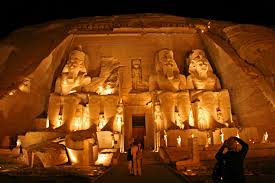BUENOS AIRES
I visited the beautiful Argentine capital in 1984 during a long group trip across South America that began in Lima, Peru and ended in Rio de Janeiro, Brazil.
The penultimate stop was Baires where we stopped only one day and one night so I didn't have the opportunity to see much, but the essentials also allowing me to see a nice tango show in a club that was celebrating 25 years of existence and for the occasion he had invited all the best tangueros who had performed there.
I saw the Plaza Mayor, the central square where the Casa Rosada government building is located, the Cabildo or the city hall, the cathedral and the Argentine National Bank.
The square is famous because since the 70s the mothers of the disappeared gathered there every Thursday during the Videla dictatorship, but also for many political demonstrations including one of the soldiers who bombed the square and killed around 400 supporters of President Peron who had two sent many years later, he died immediately after the second and was succeeded by his wife Isabelita who suffered the military coup.
In fact, Argentina has had many coups d'état and above all many economic crises, high inflation and state failure with insolvency of public debt.
Now a new president has arrived who wants to change everything, he has devalued the peso by 50% and perhaps then wants to get rid of it to take the American dollar.
Buenos Aires has around 3 million inhabitants, but the metropolitan city, with the 25 municipalities included, has around 15 million, a third of the Argentine population.
It stands on the Rio de la Plata estuary and opposite rises Montevideo, the capital of Uruguay, which can be reached by ferry in about 3 hours of navigation.
Baires is divided into many districts of which the most famous are the Recoleta with a famous cemetery where there is also the tomb of Evita Peron, the first wife of President Peron who was much loved by the Argentinians and to whom a musical and a film starring Madonna.
Then there is another elegant residential district with beautiful buildings, Palermo, then Telmo and Boca, inhabited mainly by immigrants of Italian origin, especially Genoese who worked in the port and built wooden houses painted with colorful colors in the 1950s. lively made from leftover paints in the port. There is the famous street of Caminito which hosts these houses and is the destination of many tourist visits. It is also home to the Bombonera, the famous football stadium of one of the most famous teams, Boca Junior where the famous player Armando Maradona also played.
Baires has the famous Colon theater among the largest and most elegant in the world and the widest street of 140 meters with a tall obelisk, the Avenida 9 July which commemorates the date of independence whose revolts against Spain began in 1810. And It was the place where Argentinians recently celebrated en masse the victory of the World Cup held in Qatar.
In Baires, as in all of Argentina, a lot of meat is eaten since there are large herds of cattle but also sheep in the vast Patagonian plain, therefore the asado or roast and the churrasco grilled meat, but also the milanesa, breaded steak , the tripe-based buseca, the empanadas, turnovers filled with meat, fish or cheese, the chimichurri a very tasty condiment to season the meat and the collapse, another sauce for meat, as a dessert the torte frita, dumpling with quince or potato dessert, pastelitos criollos, puff pastry desserts, alfajor similar to tiramisu.
Argentinians often drink mate, an infusion prepared with Yerba Mate leaves with sugar and orange or lemon peels, it is generally served inside the matero, a small, round gourd and sipped with a straw, the stainless steel bombilla. I met several Argentinians abroad who had brought mate leaves with them and were making their own mate. Argentines also drink good wine and beer and fernet as bitters.












Comments
Post a Comment